Jaen
Jaén Spain, Where Renaissance Architecture Meets the Andalusian Mountains
Some people call Jaén the “World Capital of Olive Oil” because it produces a whopping 10% of the entire world’s supply. We call it a place that you really should see while you’re traveling in Andalusia. It’s a lovely little city that’s almost due east of Córdoba. Jaén is a bit off the beaten path (the nearest airport is in Granada, a little less than 60 miles away) so it doesn’t get that much tourist traffic. That being said, it offers a lot to the travelers who do make their way there.
Jaén is the capital of Jaén Province, a land of scenic olive groves, mountains and Renaissance-era buildings. Its mountainous location means the old quarter’s streets are steep, narrow and picturesque. The Guadalquivir River (one of Spain’s most important rivers) passes through the province, adding an extra layer of natural beauty. Jaén province protects its beauty by being the home of four nature preserves. A fifth of the province’s land falls under the umbrella of the national park system.
In the past, Jaén Spain was one of the least-visited provinces of Spain, and the roads were some of the country’s worst. That’s changing now, though. Local roads have been improved and new highways have been opened, allowing more travelers to discover the area’s charms.
Jaén isn’t the home of anything quite as magnificent as Granada’s Alhambra, but it is full of beautiful Renaissance architecture. You’ll be pleasantly surprised if you stop in there and spend a few days.
In fact, Úbeda and Baeza (two towns in central Jaén Province) have some of the most remarkable Renaissance buildings you’ll find anywhere outside of Italy. That’s almost certainly why they’ve been designated as a UNESCO World Heritage Site. These impressive structures are also a big part of the reason more travelers are stopping off in Jaén instead of simply passing through on their way to some other Andalusian destination. Jaén Cathedral is another significant Renaissance-style building even though it wasn’t completed until long after the Renaissance was over (construction took more than 230 years, beginning in 1570 and not ending until 1802).
A Little Quick History
The ancient Romans occupied the region that ultimately became Jaén Province, perhaps because of its plentiful olive groves and the “liquid gold” that they produced. During and after the collapse of the Roman Empire, Visigoth tribes moved into the area. The Moors invaded near the beginning of the 8th century A.D. and stayed for more than 700 years, until the Christian Reconquista in the 15th century. In fact, Jaén’s name probably stems from an old Arabic word that refers to a stopping place along a caravan route. The region was in an ideal location for Moorish armies to camp overnight while moving from one key city to the next – from Córdoba to Granada, for example.
After the reestablishment of Christian sovereignty, the region surrounding Jaén became much more important. Úbeda and Baeza quickly became two of southern Spain’s most important cities (that’s why so many impressive Renaissance-era buildings are located there). Today, Jaén (both city and province) proudly preserve the past. Besides its beautiful Renaissance structures, the city’s museum maintains the world’s largest collection of ancient Iberian artifacts, many of which date from around 500 B.C
The Sights
Plenty of interesting sights await travelers who make their way to Jaén and its surroundings. Here are just a few of the sights in the city and the nearby area:
- · Olives and olive oil. Verdant olive groves cover the mountain slopes in every direction. It’s quite a sight, and one that’s reminiscent of the endless acres of grape vines you see growing at large vineyards. And, about ten minutes down the road from Jaén city you’ll run into the world’s largest olive oil factory. Tours there are just as fascinating as the tours you can take at the world’s top vineyards (call or email ahead for an appointment).
- · The Castillo de Santa Catalina. The city’s highest point is the hill of Santa Catalina, and the Castillo de Santa Catalina sits at the top. Now operated as an upscale parador (government-run hotel), the site was once a Moorish fortress but Christians rebuilt it during the Renaissance period. The castle proudly presides over the city and the views from its rooms and grounds are magnificent.
- · Jaén Cathedral. Another beautiful Renaissance-era building, Jaén Cathedral was designed by Vandelvira, the same famed Spanish architect who designed many of the most impressive buildings in Úbeda and Baeza. The cathedral dominates the cityscape, but it’s also the home of the Veil of Veronica, an object of great significance to the Catholic Church.
- · The Moorish Baths. Beneath the Palacio de Villardompardo (located on a narrow street in the old quarter and itself a sight to see) you’ll find Moorish baths that date from the 11th century. They’re not the only preserved Moorish baths in Andalusia, but they’re the largest in the entire country.
- · Fiestas. Like virtually every other town and city in Spain, Jaén has its share of annual festivals. Among others, they include Easter Week’s many colorful processions; February’s Carnaval; and Cruces de Mayo, which is celebrated throughout the province.
- · Cazorla. This is the most popular nature preserve in Jaén Province. Encompassing three parallel mountain ranges, it offers dramatic vistas along with abundant native flora and fauna, including mountain goats and wild boar. About a dozen sleepy little villages are located inside the park’s boundaries. One of these villages, called Segura de la Sierra, features an ancient mountaintop castle.
Getting There
As mentioned earlier, Jaén doesn’t have its own airport, but it’s only an hour’s drive from Granada and not much farther from Córdoba, so it’s easy to get there. Trains link Jaén to Córdoba, Seville, Granada, Barcelona and Madrid at least once a day. Hotels range from rustic but comfortable to luxurious, and the local cuisine is delicious. Free tapas whenever you order a drink (alcoholic or not) is a welcome local custom. It might not be quite as easy to get to Jaén as it is to travel to Seville, Córdoba, Granada or other well-known Spanish cities, but it’s a trip that’s well worth the minor extra effort.
Return to Southern Spain Travel Homepage
Copyright© southern-spain-travel.com All Rights Reserved. Content Protected By DMCA.
Authentic Spain Food
It's true! Get tapas, jamon, olive oil, manchego and chorizo shipped directly from Spain
Get Football Tickets
Click here to buy tickets to Spains Sports events
Book a Hotel
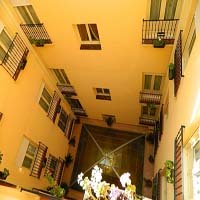
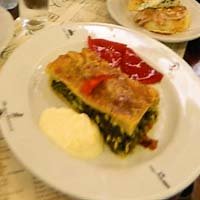
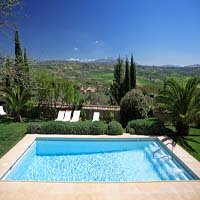
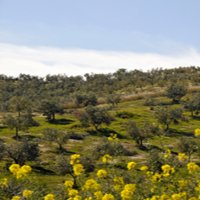
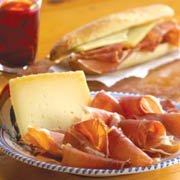

New! Comments
Have your say about what you just read! Leave me a comment in the box below.